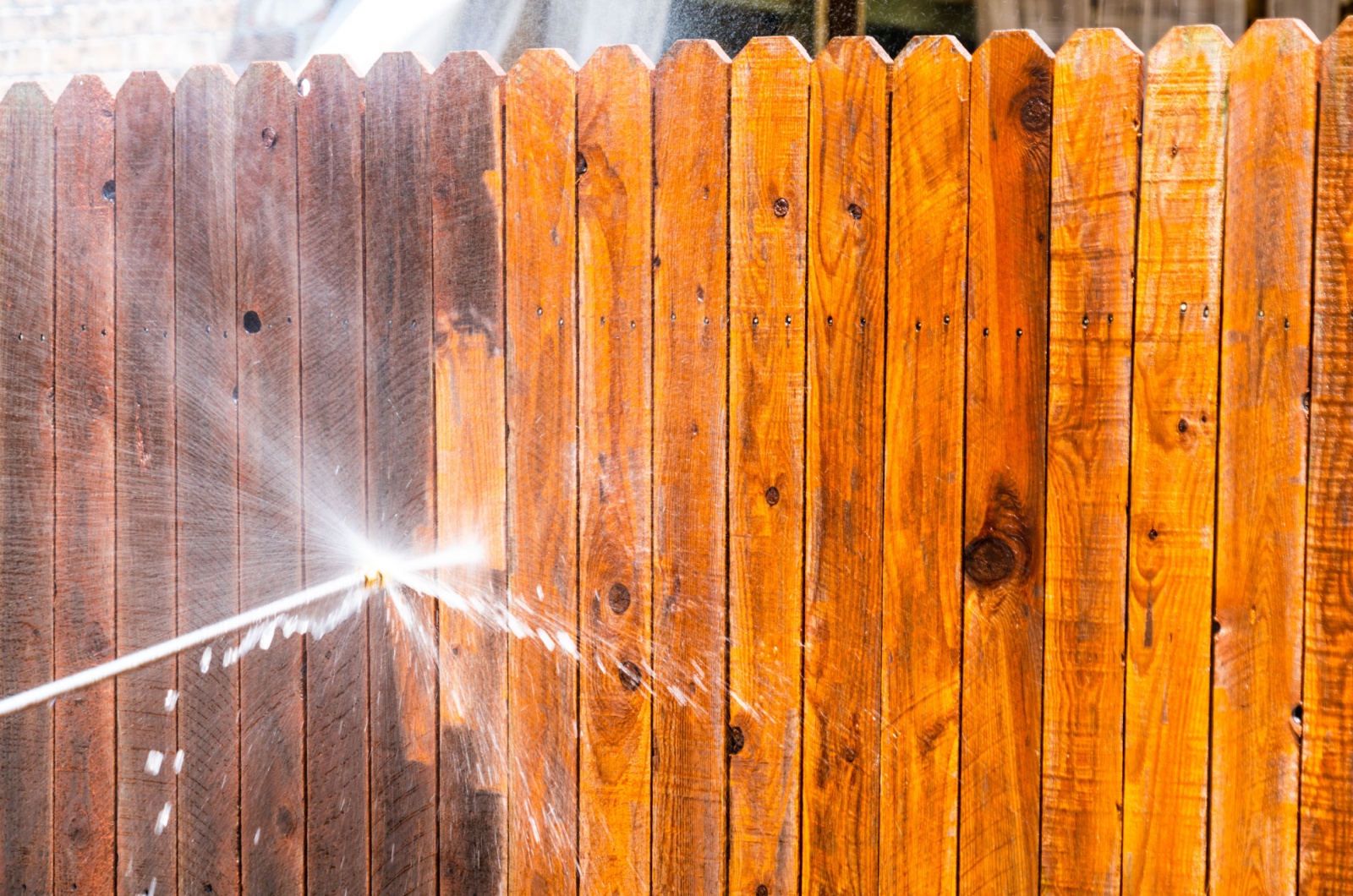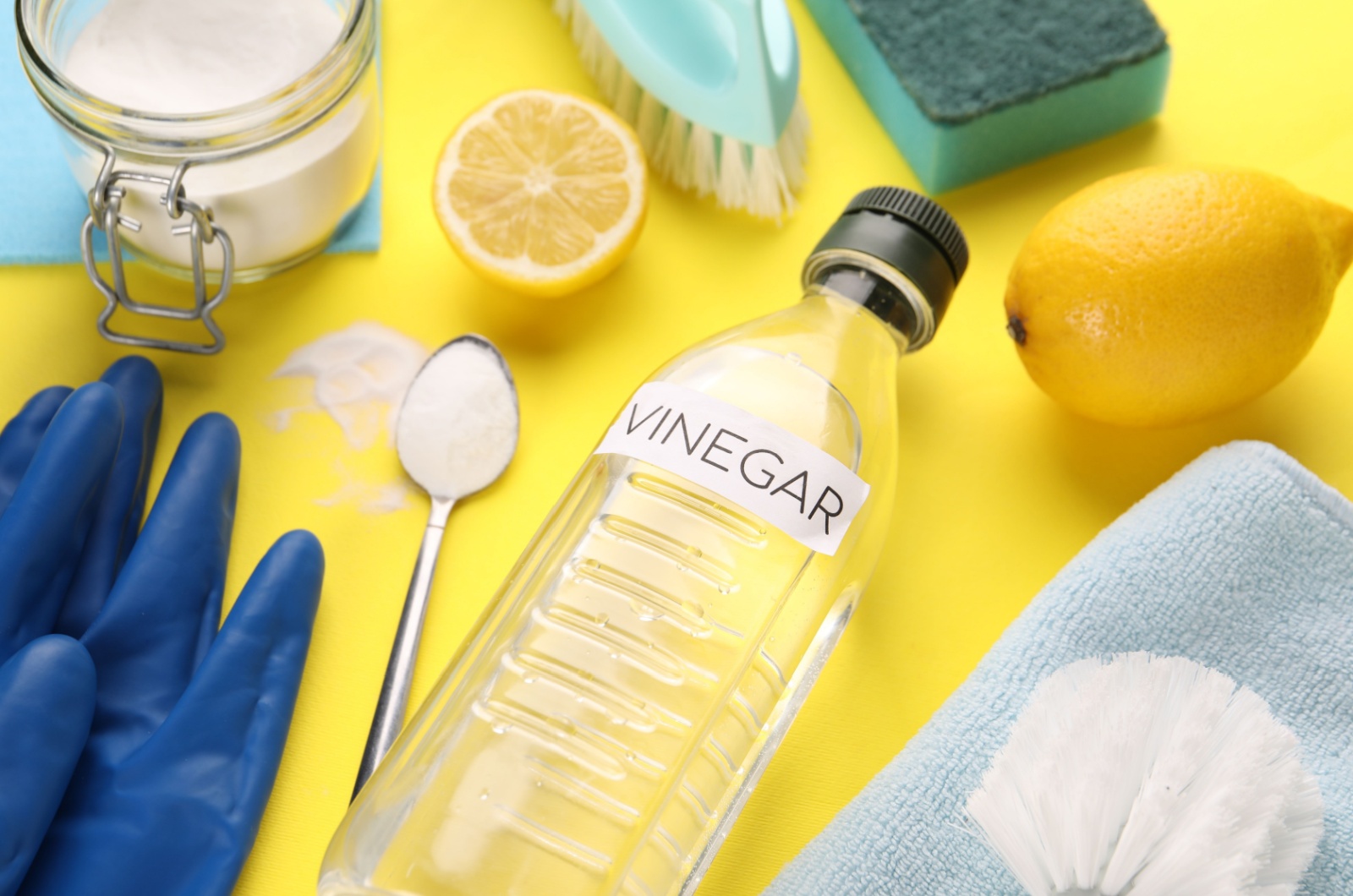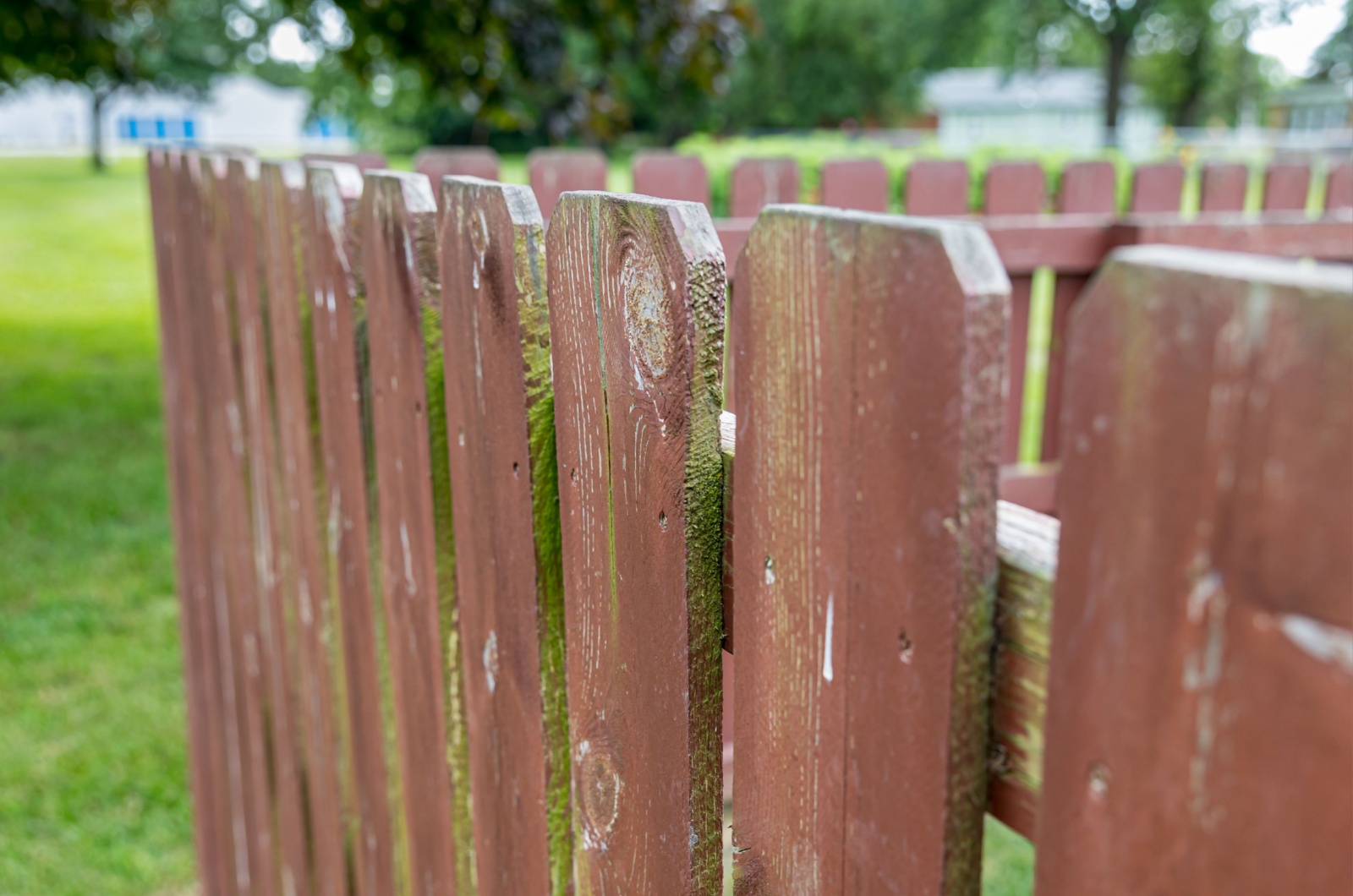When selecting a fence for a yard, most owners decide either on wooden or vinyl. For me, the first one is a better choice because of its classy appearance.
However, there’s one drawback of wooden fences we don’t speak about often enough: algae. This nuisance thrives on nutrients and moisture found in wooden fences, and you’ll face a disgusting green covering in a matter of days.
This problem may seem hard to fix, but there are a few methods that work perfectly. Unfortunately, some commonly used ways for removing algae won’t give you the desired results.
So, what’s a home run and what’s a swing and a miss? Let’s lay it all on the table!
#1 Wood Cleaner And A Pump Spray Are A Match Made In Heaven
I’ll start with undoubtedly the most efficient method! A wood cleaning solution + a pump spray is your golden ticket to an immaculate fence!
This product contains oxygen bleach instead of chlorine, which means it’s completely safe for your plants and lawn.
If your fence has sun-damaged fibers, this solution will fix it, too. Additionally, it’ll brighten the wood and make it more visually appealing.
For those who plan to stain their fence, oxygen bleach is the perfect first step since it opens up the wood grains.
All you need to do is pour the wood cleaner into a pump spray and spray it all over the algae. Then, pressure wash your fence and say goodbye to algae.
#2 The Pressure Washer Is Perfect For Fences With Thin Slats
In some cases, wood cleaner won’t help. This mainly refers to fences with thin slats. Anything you apply to your fence can end up in your neighbor’s yard and I’m sure that’s not something you want.
Pressure wash is your best choice at this point. It’s also a cheap option (if you already own a pressure washer).
The biggest problem with this method is that the strong pressure can take a chunk out of the wood. If your fence is old and thin, the damage will be visible.
To avoid this scenario, make sure not to use pressure higher than 1600 psi.
#3 A Garden Hose Can Help You, Too
If you don’t have a pressure washer and purchasing one is out of your budget, you can always try to remove algae with a garden hose.
Yes, it’ll remove the algae, but unfortunately it takes a lot of time. Pressure in a standard garden hose isn’t strong enough to remove algae quickly.
But remember that this is the most environmentally friendly method and won’t damage your fence or surrounding plants in any way.
If you have a lot of free time, then this technique might be the right one for you!
#4 Bleach And Vinegar Is A Big No-No
I always say bleach and vinegar is a solution that’ll literally remove everything. And there’s, indeed, some truth in that.
For instance, bleach will quickly remove the algae from a fence, but it’ll damage the wood fibers and weaken the fence at the same time.
Both compounds aren’t environmentally friendly and will affect your plants. You may have heard that bleach is used for destroying tree roots, but, from my experience, it’s the last method you want to use.
As for vinegar, I tried it on a small part of my fence affected with algae, and guess what? It did literally nothing.
On top of everything, these solutions can make the soil infertile so forget about a nice bloom display or any vegetable harvest.
#5 And Soap And Water Don’t Work In The Long Run
If you try to remove algae with soap and water, you’ll most likely succeed. But, this solution does not destroy algae completely and they’ll be back before you know it.
It’s not a permanent solution and when it comes to algae, permanent is exactly what we need.
So, removing algae from a fence isn’t an easy job. But with the right strategy, you can wipe those annoyances out. Why wait? Now that you’re in the know, it’s time to bring your fence back to its former glory!!






